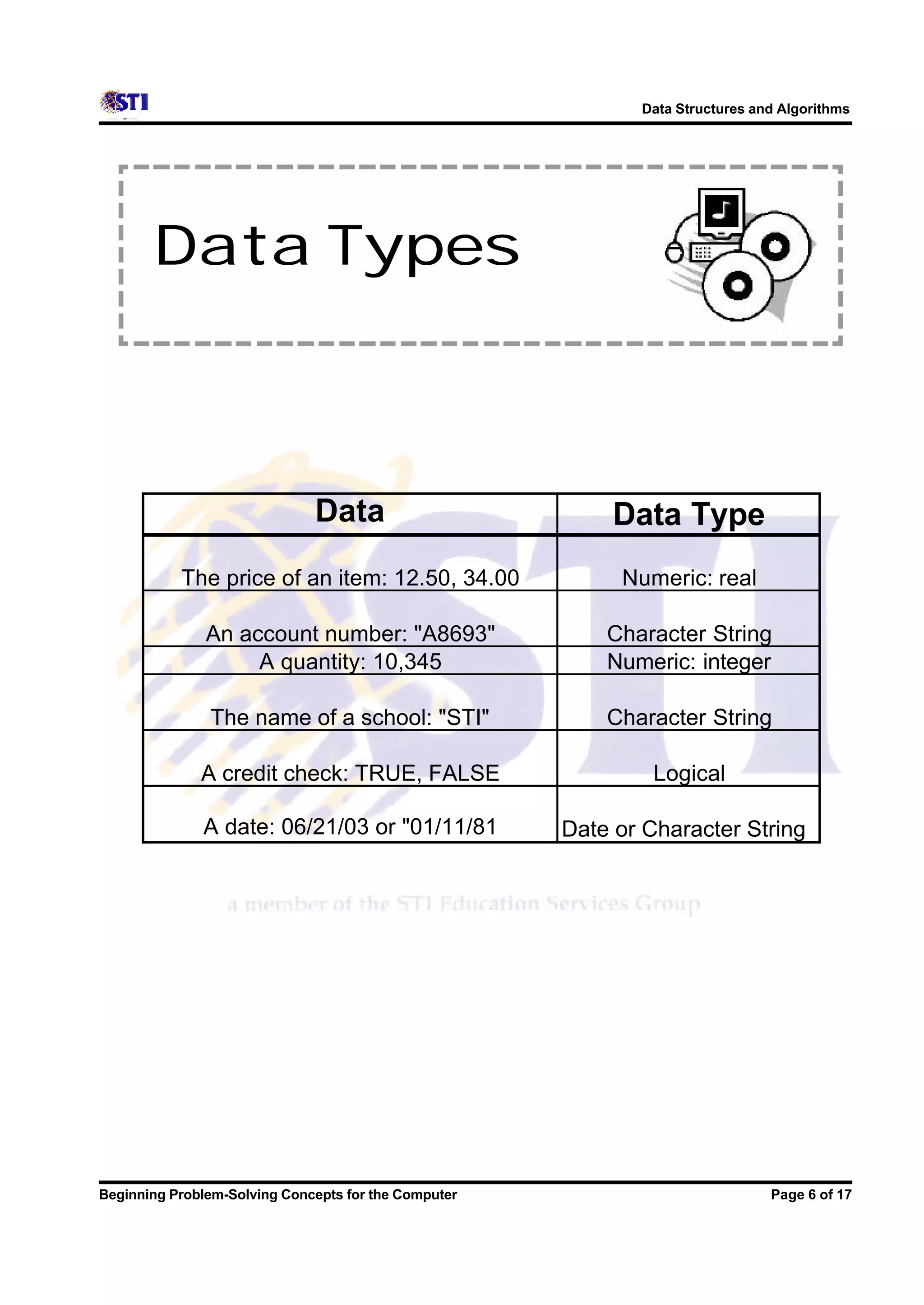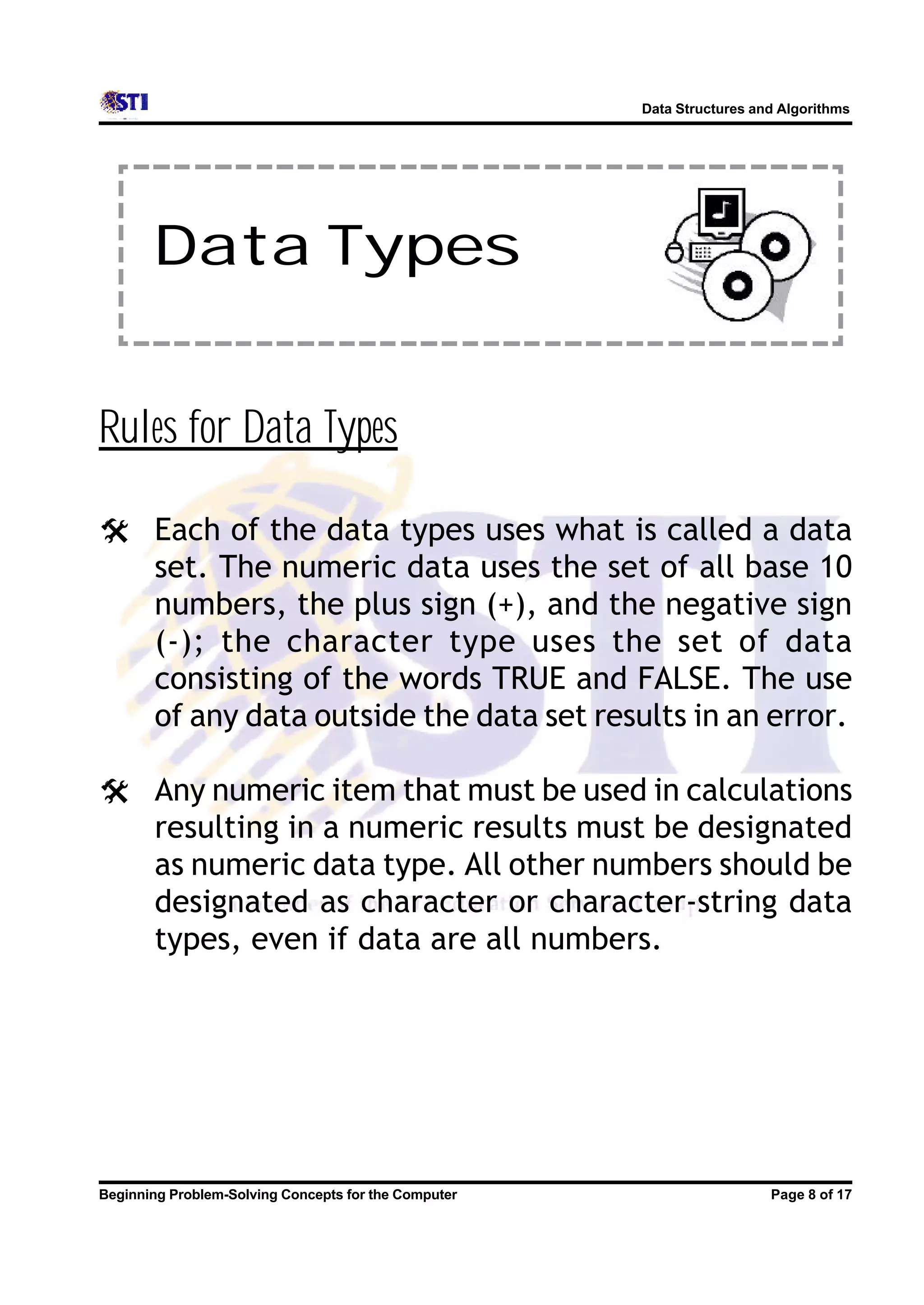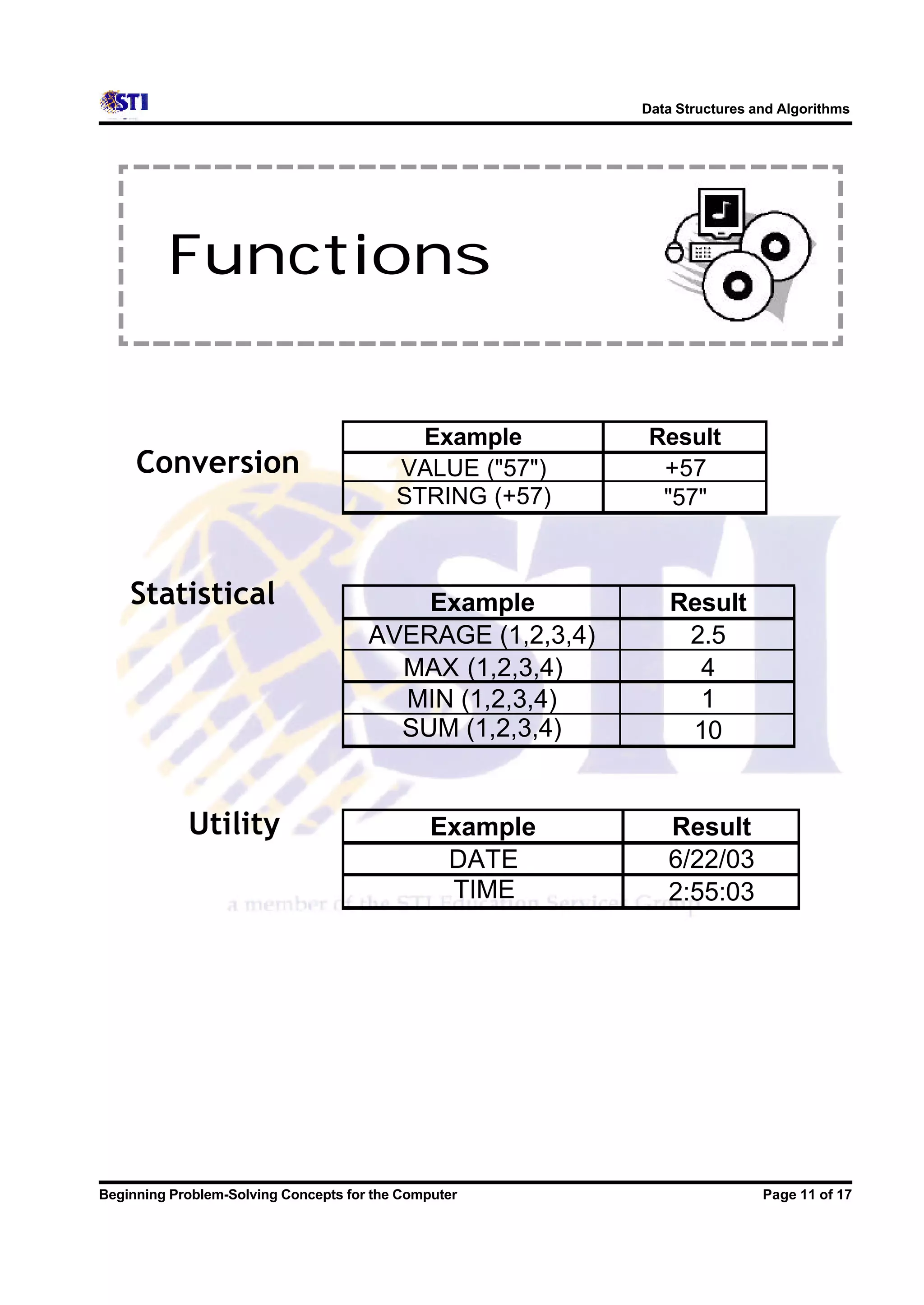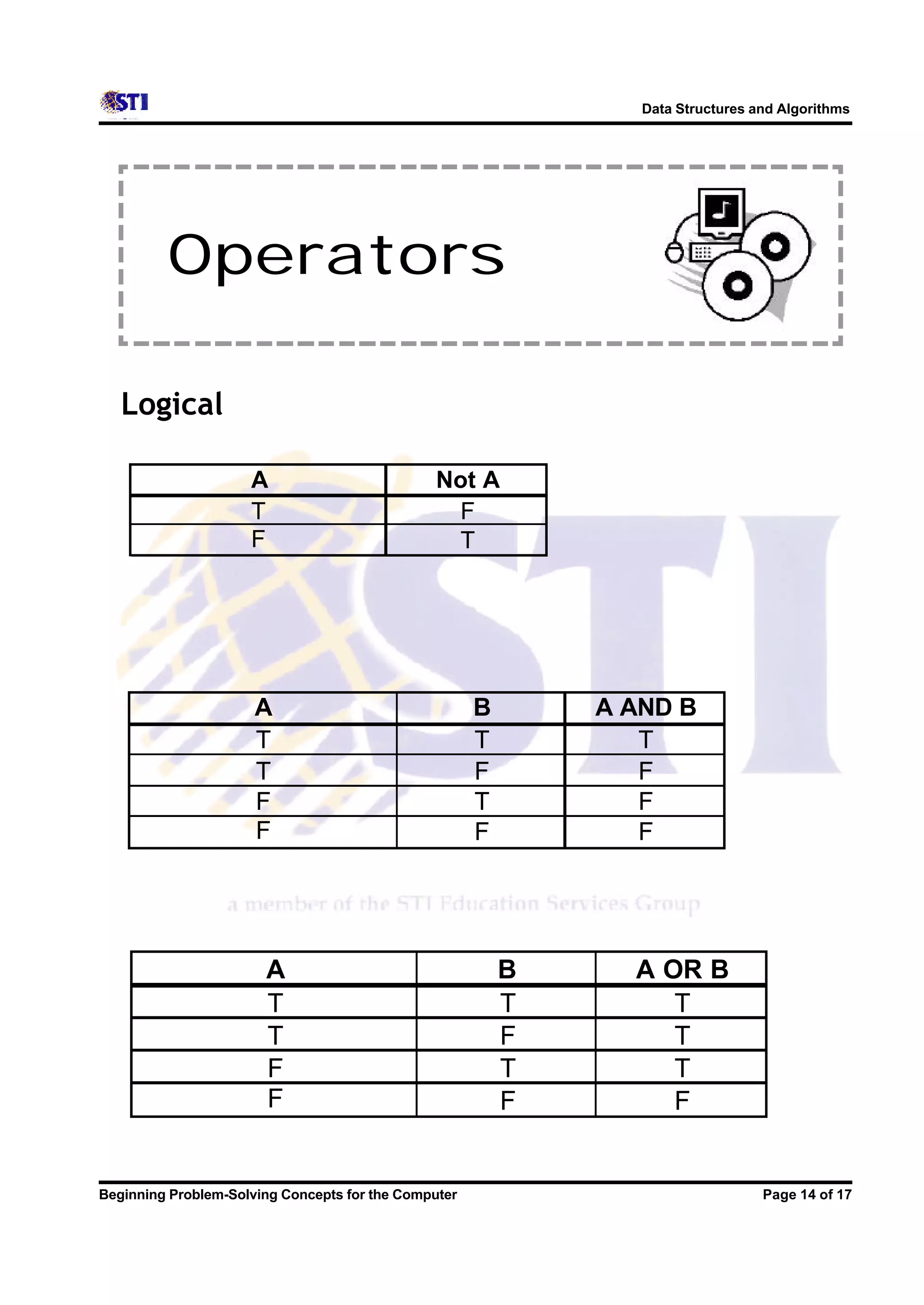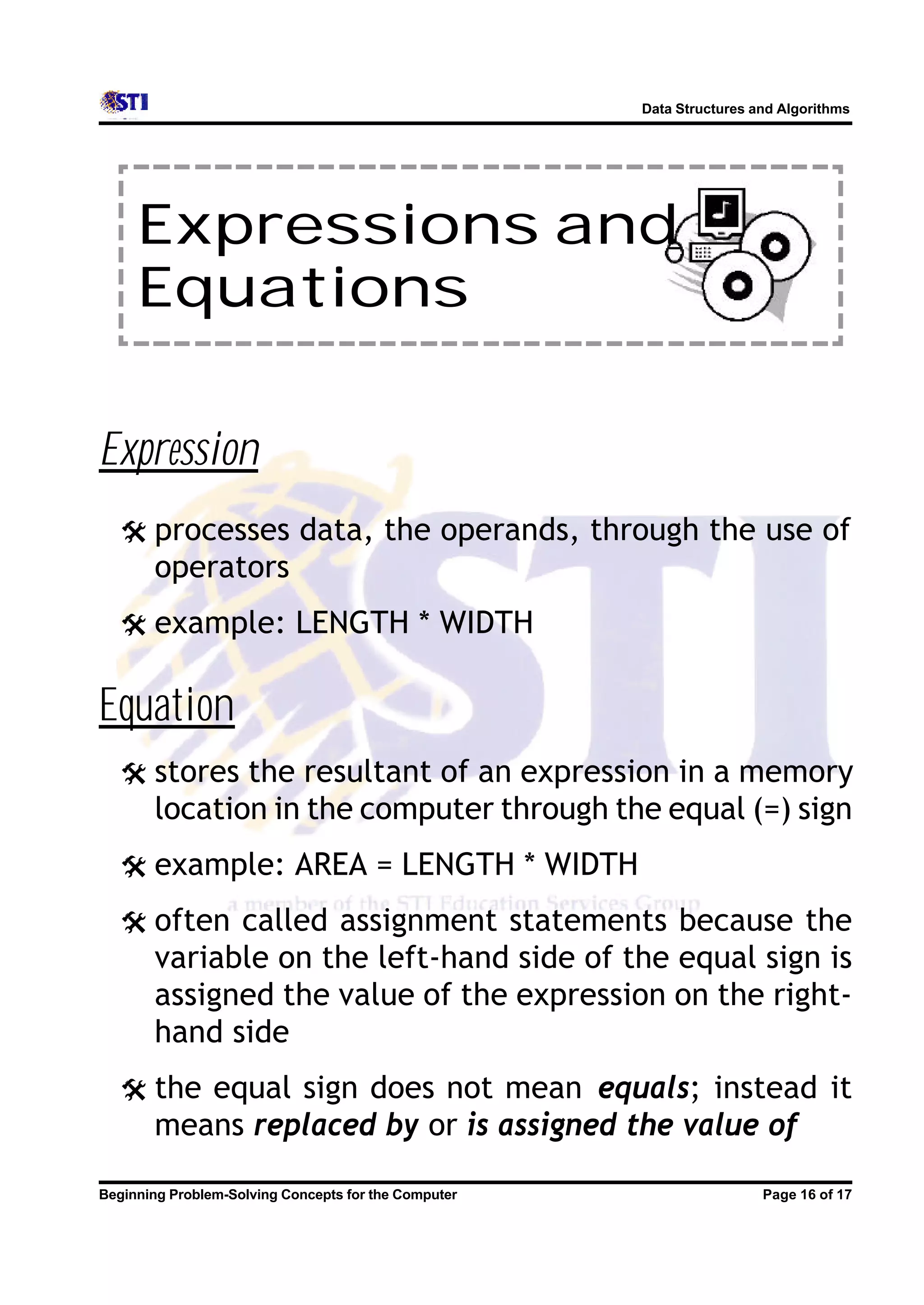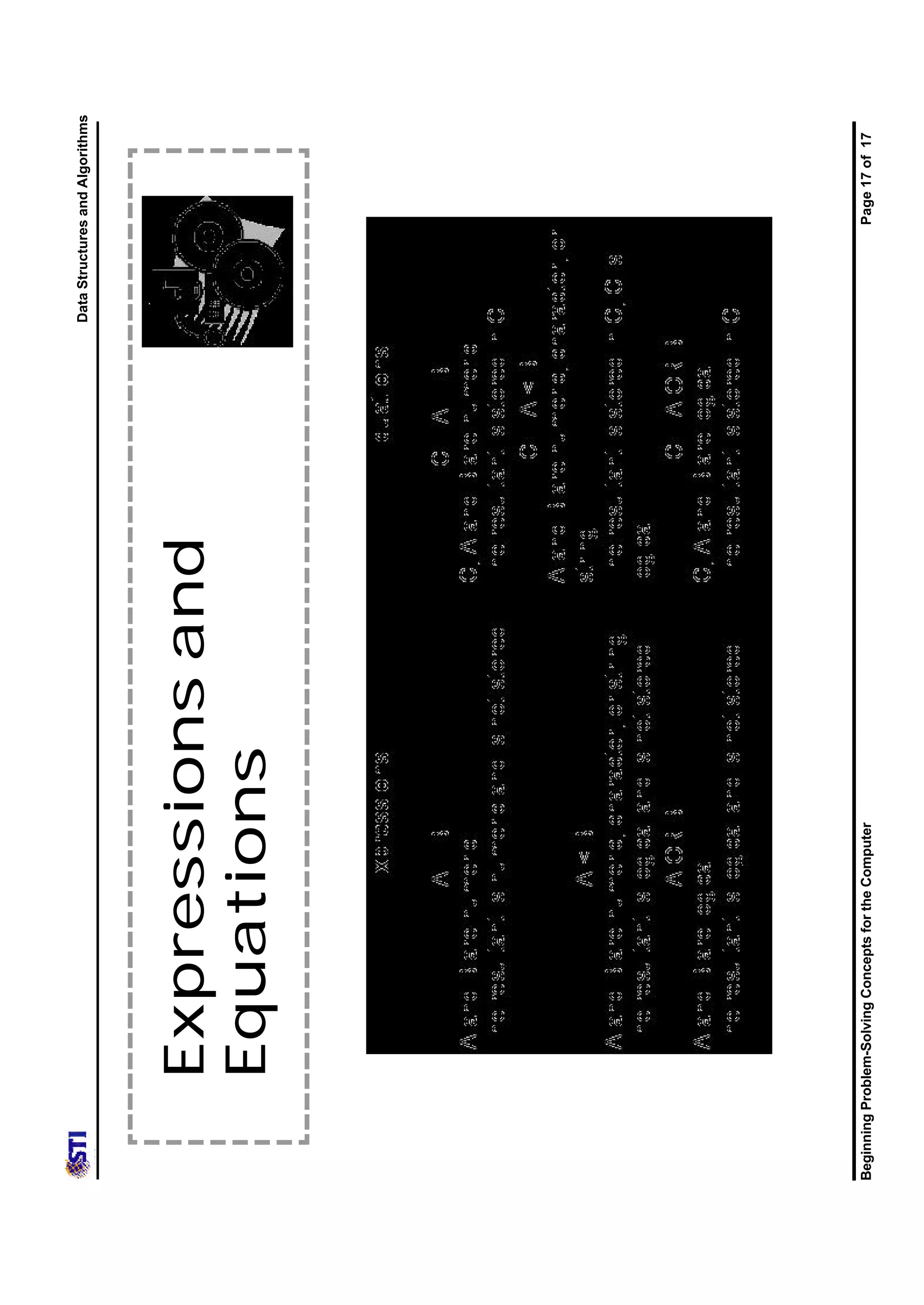The document discusses key concepts in data structures and algorithms including: 1) Constants and variables - constants never change value while variables may change. Variables are stored in memory locations. 2) Data types - include numeric, character, string, and logical. Data types cannot be mixed and each uses a specific set of values. 3) Functions - pre-written code that performs tasks and returns values. Common types include mathematical, string, conversion, statistical, and utility functions. 4) Operators - connectors that tell the computer what operations to perform, such as addition, subtraction, comparison, and logic.





